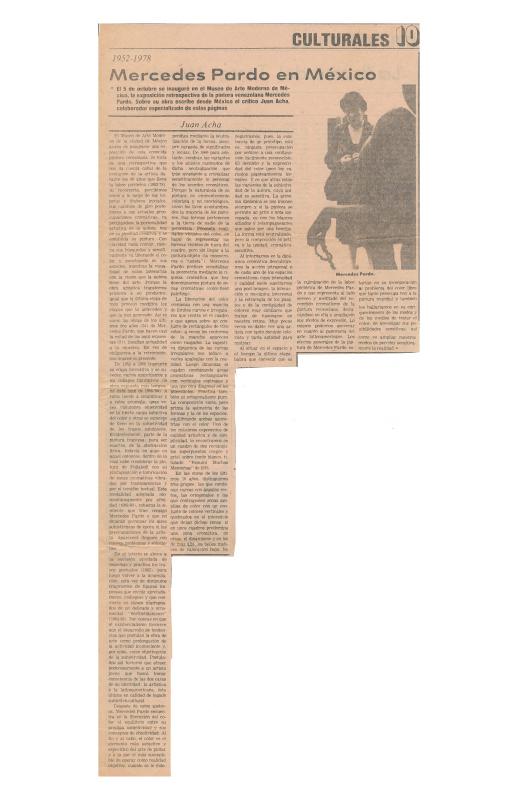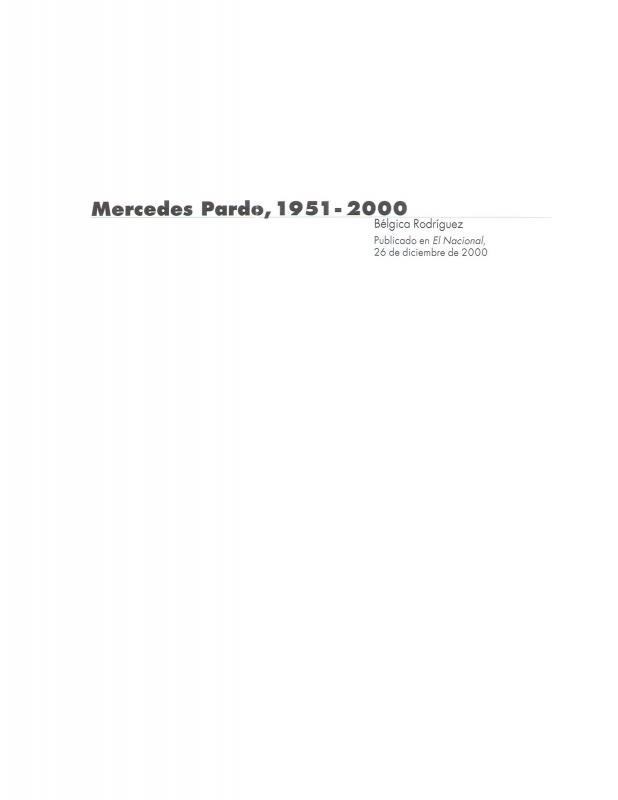This article presents Exposición de la afamada pintora venezolana Mercedes Pardo: 50 óleos, acrílicos, collages y otras técnicas, held at the Museo de Arte Moderno in Mexico City (October 1978). The works of Mercedes Pardo (1921–2005) were previously shown at the GAN (Galería de Arte Nacional) in Caracas as Del taller de Mercedes Pardo hoy (July/August 1978). The text wrongly refers to the venue as “Museo de Arte de México.” The author is the prominent art historian, critic, and curator Bélgica Rodríguez, who has written and lectured extensively about Latin American art with a focus on Venezuelan modernism; her critical expertise on the emergence of abstraction in the country sets this article apart from other newspaper reviews of Pardo’s art.
The reference to the 1920 “Realist Manifesto” by Naum Gabo and Antoine Pevsner introduces the reader to one of the key issues in the emergence of abstract art: the “universal” aspects of art, here identified in space and time, as well as the idea of art as “fiction,” depiction, and representation. They believe that “space and time are the only forms on which life is built and hence art must be constructed,” so that specific criteria on which a new conception of art needs to be built is sketched: color should no longer be a “pictorial element,” moreover, “color is the idealized optical surface of objects.” Such an insight of color is clearly informing both Pardo and Rodríguez’s reading on her work, being able to animate the picture plane through forms and colors that seem to recede and advance, thus creating a rhythm on each of her surfaces. The author’s celebration of the simplicity of Pardo’s work refers both the manifesto and the definition of abstraction itself. Pardo’s geometric and non-geometric realms are presented here as a coherent discourse by means of which forms are either “rigorous” or “free,” albeit always “simple.” Simplicity of formal elements, dynamism, as well as space and time are key elements in the work of several Venezuelan artists of the time, mainly Cinéticos at their peak of public commissions. Whereas Pardo operates differently on the instability of the picture plane and her preference for a flat, bidimensional support. Kinetic works mainly rely on three-dimensional supports and depend on the displacement of the viewer.
According to the author, the exhibition is not a retrospective in overt opposition to Mexico-based Peruvian art critic’s account of the same show. [In this regard consult the ICAA Digital Archive: Juan Acha, “Mercedes Pardo en México,” (doc. no. 1331459). For the museum director’s presentation of the exhibition, see Fernando Gamboa, “Mercedes Pardo: Es poco cuanto se diga de su obra” (doc. no. 1331475). It is available another essay by Rodríguez on the painter: “Mercedes Pardo: 1951–2000” (doc. no. 1143027).]



